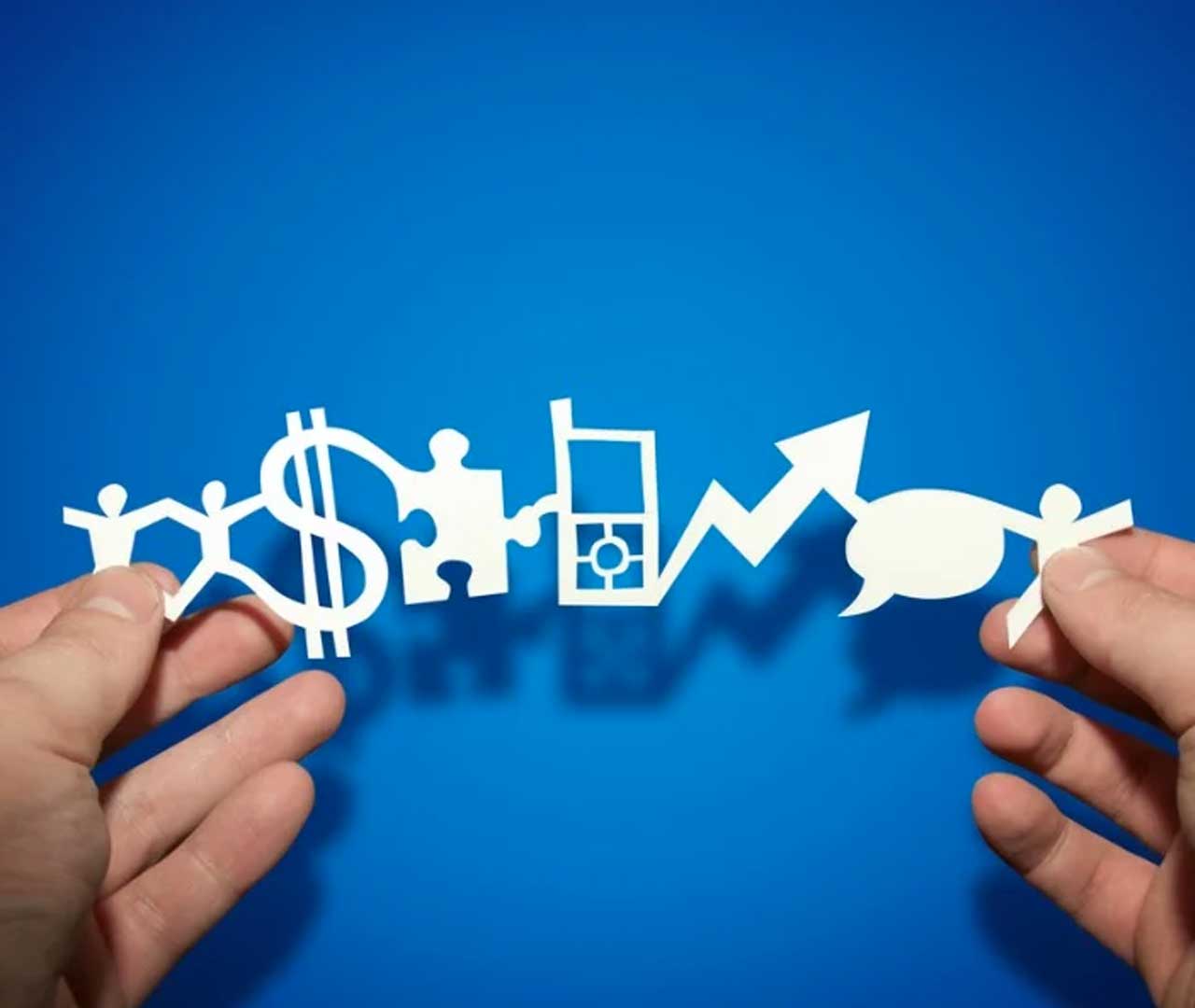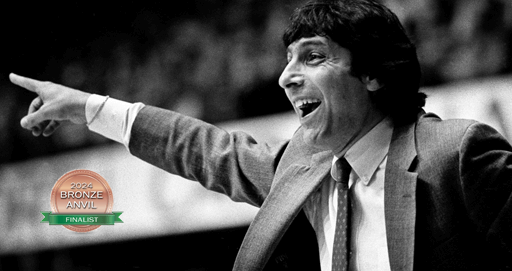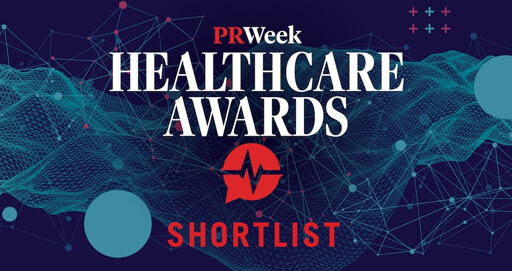As originally posted by PRovoke Media
As Covid-19 disrupts the marketing landscape, consumer brands have shifted communications—and in some cases manufacturing—to find ways to help their customers stay safe and meet basic needs.
In the fourth in a series of articles examining the impact of the novel coronavirus on a variety of sectors and practice areas, PRovoke Media interviewed several experts to take an in-depth look at what’s happening in consumer marketing.
Participating in the discussion:
- Tom Coyne, CEO, Coyne PR
- Gail Heimann, president & CEO, Weber Shandwick
- Diana Littman, US chief executive, MSL
- Kate O’Shea, co-founder and partner, AKA-Asia (Singapore)
- Josh Rosenberg, CEO, Day One Agency
- Laura Tomasetti, founder + CEO, 360PR+
- Rema Vasan, chief innovation officer, Marina Maher Communications
Paul Holmes: What has been the impact of Covid-19 in terms of consumer marketing?
Diana Littman: Most leaders have been through at least two deep economic crises, and while this is unlike anything we’ve ever experienced, what we’re seeing with Covid-19 is that leaders are thinking much more deeply about how to orient for recovery. Caring for people and business is more interconnected than it has ever been. And communications that are both agile and clear in a time of extreme uncertainty are core to every brand’s present and future.
Tom Coyne: Consumers are expecting and demanding that brands play an active role in being part of the solution. It’s almost become table stakes, consumers want brands they love to do the right thing and to provide support during this tough time. When this is over, consumers will reward the brands that really stepped up.
Rema Vasan: Across the board, we are recommending and seeing brands and companies strive to be in service of their people, not just their brands. They are looking to act on their core values versus being focused on marketing campaigns and promotions. Brands are working hard to convey that they understand the gravity of the situation, that they are transparently assessing the scenario and building plans, and that we are all in this together.
Kate O’Shea: The impact of Covid-19 all around has been financial, physical and emotional. What this means for consumer marketing is that brands need to be more empathetic, self-aware, relevant and adaptable than ever before. It’s an important time to reflect on what role the brand and its products and services should and can play in the world today, what message it should be marketing—through the lens of being useful and supportive in the consumer’s new reality, and what appropriate tonality to take amidst the doom and gloom.
In addition, with regulations and market situations evolving on a day to day basis, there is a need to set up a listening and response framework that empowers companies to act or redirect their efforts quickly. Production and development of communications content and approval processes have also had to become more agile.
Laura Tomasetti: We’re all listening more closely than ever, taking our cues from consumers and moving away from any marketing that’s perceived as promotional to thoughtful communication that is less about selling and more about informing and adding value – it’s less ‘click to buy’ and more ‘here’s how we can help you today,’ with enormous sincerity.
Josh Rosenberg: We’re baking bread. We’re blowing out our birthday candles over video chat. We’re watching how-tos so that we can turn bandanas into masks. The hottest club is in our living rooms. Overnight, our physical worlds have shrunk to the four walls of our homes. All of our communication takes place online; the Internet is our lifeline to the outside world. Oh, and Tiger King.
In our new normal, we’re all just people in screens looking at screens. And for brands to reach us as consumers, they need to embrace the idea that social media marketing is now consumer marketing. This is the landscape brands must navigate in order to make an impact with consumers. Brands must stay true to their values and listen to their customers. Those that are nimble enough to communicate smartly, directly and quickly and provide value for their consumers will not only win in the short term, but will also leave a lasting impression in the long term.
PH: What have been the priorities in terms of communications over the past few weeks?
RV: We’ve seen companies and brands responsibly and responsively evolving their priorities as the landscape evolves and the priorities communicated by governments and public health officials evolve. The first wave of communications included offering—and then mandating—that employees work from home when able, and with some companies reminding consumers to adopt safe practices like hand-washing and social distancing.
Then we saw companies with a very clear connection to the crisis—whether through their products or through their brand ethos—offering ways to help, whether donations of supplies or equipment, or even making news and entertainment available free of charge. Next, companies started pivoting in unexpected but helpful ways, for example with Ford manufacturing ventilators. Companies who don’t have the ability to engage from a manufacturing perspective are now more broadly engaged in some type of proactive communication, even in small ways like tapping into expert and influencer resources to encourage safe and healthy practices or providing inspiration and positivity through social content.
Overall, we see this evolution of communications priorities in real-time speak to the need for brands to be agile, responsive, and hyper-aware of stakeholder and consumer needs.
JR: Initially, companies focused on internal communication with employees…. The communications focus has since shifted externally as brands develop programs to make a difference for their external communities. They’re telling their customers about the changes they’re making to help, including adapting business models and supply chains. They’re also leveraging their partners to raise awareness for how people can stay safe and support initiatives like ordering from local businesses or delaying orders for non-essential items.
Additionally, many consumer brands are choosing to pivot or pause existing marketing plans in favor of tone-appropriate initiatives. Others have quickly mobilized to create net-new collateral or initiatives that directly address the crisis and the impact it is having on their businesses and communities.
KO: Firstly, internal communications has been crucial, ensuring all staff feel safe and cared for, are clear on the company’s stance during the situation and its related new policies, as well as how to continue to be productive and perform during this period. Next, communicating the impact of Covid on products and services to existing customers has been key. Striking a balance between providing important updates, keeping customers engaged and not overcommunicating or spamming recipients. And thirdly, continuing with lead generation or acquisition efforts but at an appropriate pace and tonality. Finding new, relevant ways to insert products and services into this new norm, as well as longer-term brand-building communications that will generate top of mind awareness and connections for the future.
LT: For many clients who offer valuable solutions for all of us at home—in education, entertainment, food and beverage, fitness and more—the priority has been to communicate clearly and often about how they are responding, including how they are keeping operations running if they can do so safely to provide products and services people need. For others, it’s been about offering support, sharing expertise and encouragement. Everyone has a role to play. We’re in touch with media to offer clients as resources. We’re engaging influencers to share value-added information with their audiences. And, more than ever, we’re focusing on creating owned content. The only thing that’s really stopped is experiential events, of course.
TC: I think the initial priority from many of our consumer-facing clients was, “we are still here, we care about you, we are taking steps to ensure your safety and we are adapting our business in this ever-changing environment.” We saw a lot of similar emails and consumer-facing messages those first few days…. Companies needed to move quickly those first few days and as the social distancing picked up speed, we saw businesses change their messages dramatically. “Safety and security” gets thrown out a lot by brands, but you need to make sure you are coming across as authentic and real to consumers. Now the focus is the long-term picture—what’s the bounce-back plan? How will this change how we do business in the future? Will it change consumer behavior?
PH: Is there a company that has done a particularly outstanding job in responding?
TC: Many companies are finding innovative ways to leverage their assets – a few include Bayer donating one million over-the-counter products and multivitamins to Americans in need; our client Crook & Marker is doing a great virtual happy hour to raise funds for bar workers as well; U-Haul gave displaced college students free storage. Programs like that really answered a need. Many celebrities also stepped up finding interesting ways to stay top-of-mind and raise funds.
LT: JetBlue and Patagonia both stand out as companies that got it right early on—JetBlue for its customer-friendly policies and frequent communication that struck the right tone, and Patagonia for its unwavering focus on putting its employees first and letting us all know about that in a way that’s authentically Patagonia, not at all grand-standing.
Two 360 clients getting it right include Bright Horizons, which is using its resources and expertise to set up child care hubs for working parents on the front lines of Covid-9, including first responders and health care workers. This is a significant effort in partnership with Arianna Huffington’s Thrive and #FirstRespondersFirst. And our Trek Bicycle client has quickly transformed its distribution to deliver bikes right to people’s doors and at the same time continues to support retail partners by directing to local bike shops for repairs and maintenance. I’ve been cycling on weekends and it’s truly one of the best things we can be doing right now to clear our minds and stay fit.
JR: I’m really proud of some of the brands we work with who have done particularly outstanding jobs in response to the crisis. They’ve not only connected with their respective communities but also brought them together, leveraging their platforms and reach to make a real difference. Facebook and its family of apps has led the way in providing access to resources and reliable information. This includes hosting livestreams with experts like Dr. Fauci, launching information hubs, making it easier for people to request or offer help, connect with one another via new products like Messenger for desktop and show their support with Instagram’s Stay Home sticker.
Chipotle is literally driving home its delivery messaging by hosting Chipotle Together hangouts featuring celebrity performers like Luke Bryan and Kaskade. American Express leveraged its partnership with Hilton to donate 1 million hotel room nights for frontline medical professionals. And Comcast is offering free broadband to low-income households while also increasing the speed for Internet Essentials customers.
Beyond our clients, we’re also loving what Postmates and others and are doing. Postmates quickly moved to create and announce a contactless delivery option; others have since followed its lead. It also leveraged voices including Jennifer Aniston and Mindy Kaling to support first responders and address the importance of supporting local restaurants. Walmart is raising awareness for the meaningful actions its associates are taking through compelling social content. Verizon and Twitch are also airing talent-fueled concerts and telethons to generate relief fund donations. Jack Daniels created an awesome, crowdsourced “Cheers to Making Social Distancing, Social” video by leveraging its community.
RV: Across industries, we’ve seen a number of companies step up to contribute and add value during these challenging times. Communication to customers around these efforts have also been on overdrive. Some favorite examples have been across the retail space, particularly grocery retailers. Trader Joe’s, Target, Whole Foods are not only accommodating more vulnerable customers with designated hours but are also making sure that the employees who need to show up every day are being compensated with pay increases and added health benefits. When normally these businesses are thought of as basic suppliers of commodities, now these companies and their employees are being seen amongst the heroes of the pandemic.
KO: Among the more unexpected voices to stand out during this period are The No More Project and US-based National Domestic Violence Hotline. This is an unprecedented moment in time in which everyone can relate to being isolated at home during the pandemic. The two organisations joined forces on a campaign that responds to a frightening by-product of our current reality: victims of domestic violence are increasingly trapped with their abusers. The “#Listeningfromhome” campaign was designed to raise awareness of this problem and highlights that, like Covid-19, signs of abuse are not always visible. It educates people about the warning signs, encourages them to get help if they hear or observe incidents of domestic violence and asks for donations to support the helpline’s response efforts.
Closer to home, KFC in Malaysia moved locals with a Facebook shoutout to all food delivery riders including the competition—thanking and encouraging the “abang-abang” or “brothers” who continued to bring food deliveries to homes during the COVID-19 period. KFC’s act of rising above the competition to bring a message of solidarity across the nation was greatly received.
PH: What are the major communications challenges once the recovery begins?
KO: Reconnecting with the audience will be difficult if brands do not continue to engage customers and potential leads during this period. Like any human relationship—out of sight, out of mind, compared to another competitor or provider that has been keeping close. Expectation setting and clarity on the path back to 100% operations—this is going to massively affect the customer experience if they are confused or misinformed about what they should be expecting moving forward. Again, this has to start with a fully aligned workforce – a strong internal communications foundation.
Lastly, investors and customers may want to know your long-term game plan and how the company will recover or prepare itself for a situation like this again in the future. It would be the time to plug gaps, create new frameworks and systems, sharpen the company’s strategic messaging and reassure key stakeholders through open communications.
JR: Companies are going to need to remain true to their brand values at every stage of the crisis and adapt accordingly—including on the other side of the pandemic. When we get there, we’ll need to assess what that new normal looks like and accept that it will continue to change. When will people feel comfortable going to a festival again? Getting on a plane? Or even a haircut? It won’t be “business as usual” overnight by any means, and some of the behaviors consumers have adopted as a result of the crisis—from virtual celebrations to working/schooling from home—are likely to stick. We are going to have to adapt to these shifts for the long term while also helping consumers to re-enter the post-recovery world through new types of experiences.
LT: It’s critical to have a plan in place, not just for today and this month, but for three and six months down the road. Everyone will be dialing marketing back up at the same time and brands that sustain relevance over the next few months will have less ground to make up. If your customers have stayed with you, the recovery will be easier.
TC: In the post Covid-19 era, brands will immediately rush to market with aggressive advertising and promotions. It’s going to be a challenge to break through the clutter. Everyone is literally going to do a welcome back or opening promotion. How do you make personal connections that make your brand stand out? That’s the big question moving forward.
RV: Three key challenges are going to emerge once recovery begins and we emerge into a “new normal”: the right timing, the new world and what defines a brand. Timing is a question of when the right time to return to normalcy begins, and how to properly return to “business as usual.” A moment too soon, and the brand will be seen as opportunistic and inauthentic. The New World: this pandemic will have lasting and long-term ripple effects, and brands will have to sort out how they fit and where they belong in this new world. Consumers will have different mindsets and new segments will arise. And finally, what defines a brand? Brands, like people, will have transformed after this crisis. Who will we, as companies and brands, have become after all of this? What are our new outlooks, values, points of view? How will brands show up differently? Will we be more authentic, more “human” as a result?
PH: How will this impact the PR business short and long term?
Gail Heimann: It’s still too early to tell how this will all impact the industry in the future, but I suspect we will see communications as a key player in helping businesses and communities navigate and rebound from this situation in the long-run. We’re seeing employers as trusted sources of information now— which is a shift from the role industry has played in other global crises. That means communications has become central to influencing the behavioral changes needed to get society through this—and employers (and their agencies) are at the center of that. |
Throughout all, placing a premium on humility, empathy, humanity and the impact on society will be critical.
TC: This will have an impact on business, both long and short-term. We are seeing budget reductions and projects moved to Q3 and Q4. We are poised to bounce back from this, but it looks like there will be a business impact. In an industry that has already begun to adapt a flexible and remote work environment, this thrust the WFH mentality to the forefront. Many agencies that had struggled with this in the past, are now finding it essential to adopt. We were lucky to be ahead of this curve and had the infrastructure in place to make it seamless for our clients.
LT: Short-term, I think it’s important to try to limit distractions—it’s easy to get distracted by the day’s news—and try to hone-in on what the must-dos are for your organization and your brand with the context of what’s important to your customers right now. What are their needs and how can you solve for those? How we work has forever changed—and in some ways for the better. We’re listening more intently, and we’re all getting better at using the incredible technologies available to us to communicate with each other, with clients and with consumers. I think we’ll see digital platforms continue to dial up—evolving how we tell stories and distribute content—with more of that and less big-splash physical events.
JR: What was true one month ago will no longer be true post-crisis. We are forever changed as a people and we can’t underestimate what two or three months of shelter-in-place will do to the consumer need-state/psyche. Especially now that we can all appreciate a perfect homemade sourdough. As communications professionals, we have the ability to help shape, share and fuel our clients’ stories to help them connect in the short term and re-emerge even stronger in the long term. Ultimately, it will be critical for us to apply key learnings from the crisis (listening to customers, acting authentically, adding value) with every move.
KO: There’s a little bit of going back to the roots of what public relations is all about—managing perceptions of and relationships with key groups of people crucial to your business. If anything, the CoVid situation has made the PR business more relevant than ever with message marketing, crisis preparation and response, employee engagement, brand communications, perception management, with authenticity and relevance to distinct audiences, channels and content formats.
RV: In the short-term, real-time takes a whole new meaning. Tomorrow will be different than today, and as communications professionals, we need to be constantly monitoring and evolving our recommended approach for brands. There is no plan that is set in stone… rather, it is about agile thinking that is appropriate to the audience and environment.
In the long-term, this crisis will change the fabric of society, how we connect and interact, how we spend our time and what we value. While the pandemic has impacted countries around the world in many ways, our shared human connection is stronger than ever. Universal, human insights will remain critical across every communication effort, but the importance of locally relevant execution will elevate.



